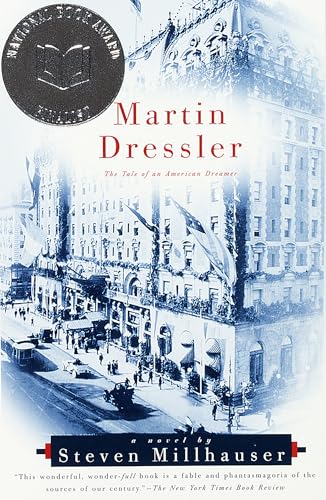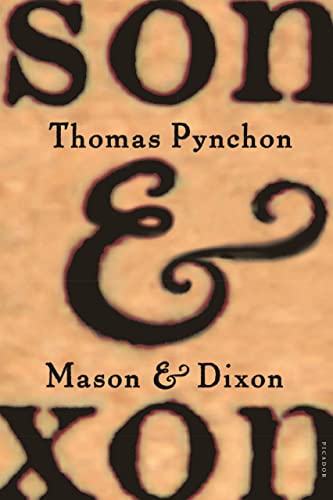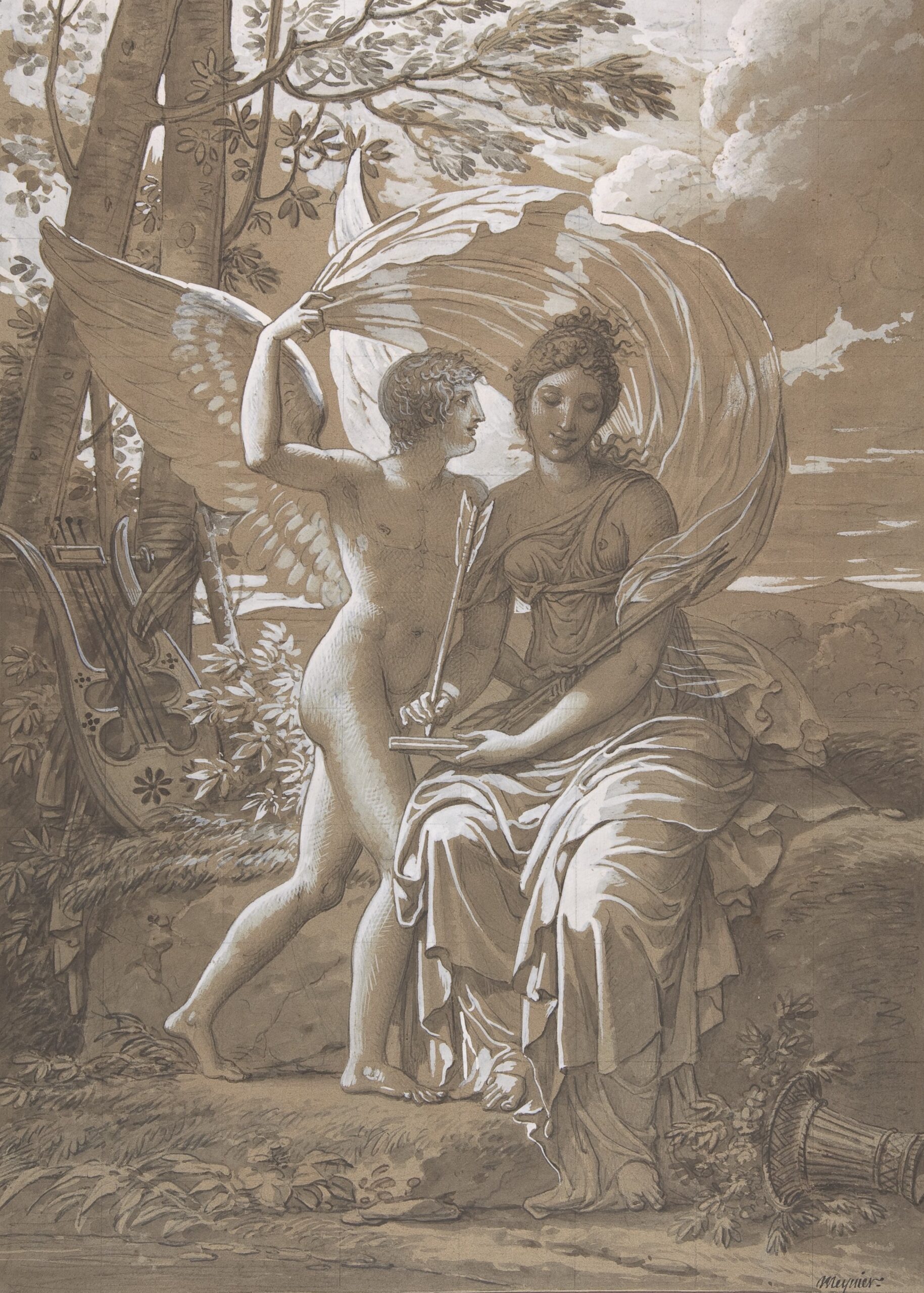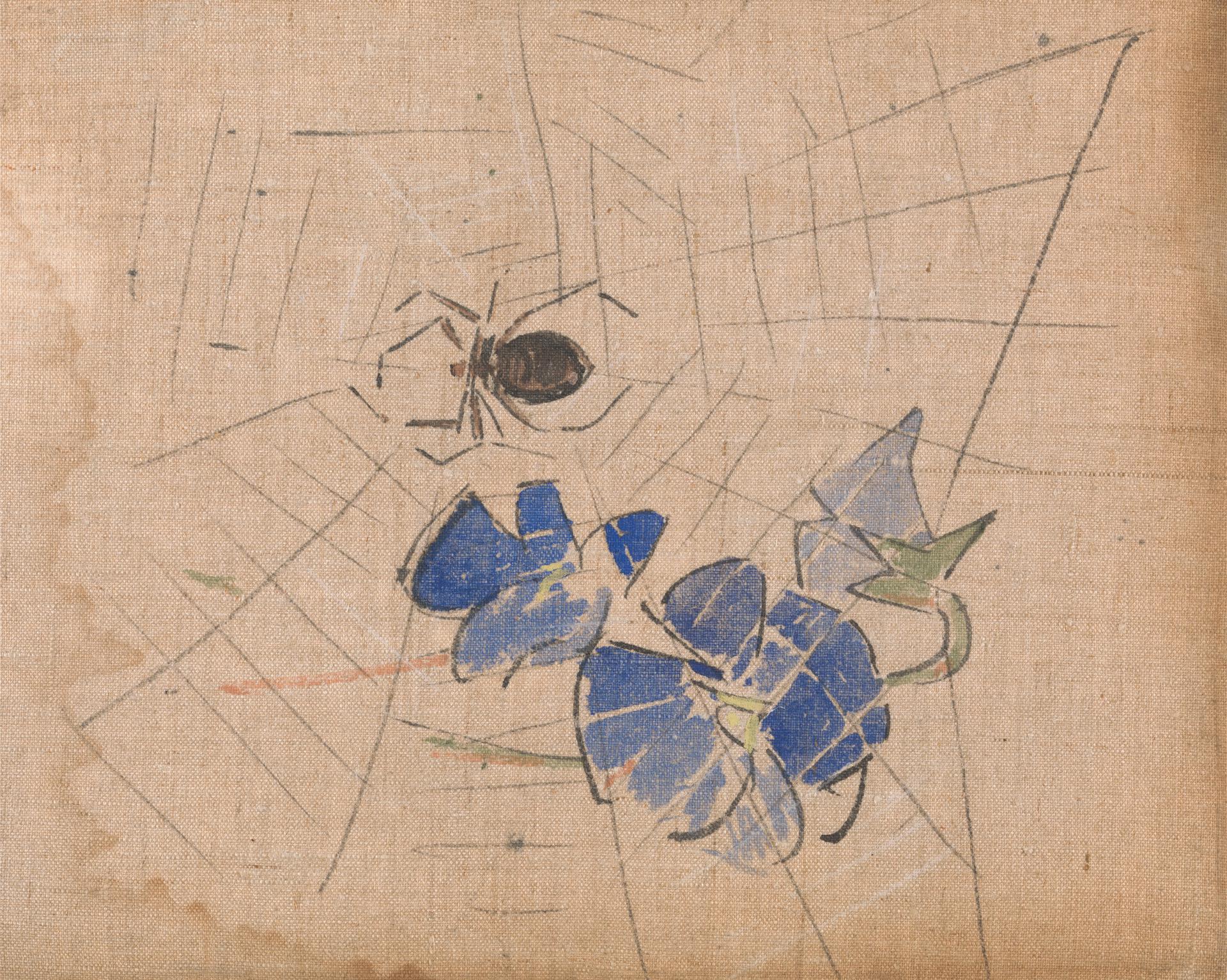1.


 In E.L. Doctorow’s Ragtime, a young man finds himself in the presence of Evelyn Nesbitt, the famous “It Girl” of the 1920s, and falls into a room “clutching in his hands, as if trying to choke it, a rampant penis which, scornful of his intentions, whipped him about the floor, launching to his cries of ecstasy or despair, great filamented spurts of jism that traced the air like bullets and then settled slowly over Evelyn in her bed like falling ticker tape.” In Michael Ondaatje’s Coming Through Slaughter, the madams of New Orleans are categorized by their staffs of various racial mix. “Ann Jackson featured mulatto, Maud Wilson featured high browns, so forth and so on. And them different stables was different colors. Just like a bouquet.” In Michael Chabon’s The Amazing Adventures of Kavalier and Clay, Joe Kavalier first meets Rosa Saks, whom he will later marry, as she sleeps naked on a bed, a scene he draws in Conte crayon on an overdue notice from the New York Public Library. “Fifty-three years later . . . the drawing of Rosa Saks naked and asleep was found . . . in a Barracini’s candy box, with a souvenir yarmulke . . . and a Norman Thomas button.” In Bruce Olds’ Bucking the Tiger, Doc Holiday describes sex as “crest after crest of the most coilsprung and soaring carnality, shanks asplay, thighs agape, cunt akimbo, slicker than a skyful of starglide.” All of the details in these references—the jism falling through the air like ticker tape, a Barracini’s candy box, a skyful of starglide, the dated but somehow lovely phrase “high browns”—lead to one conclusion. History is a whore.
In E.L. Doctorow’s Ragtime, a young man finds himself in the presence of Evelyn Nesbitt, the famous “It Girl” of the 1920s, and falls into a room “clutching in his hands, as if trying to choke it, a rampant penis which, scornful of his intentions, whipped him about the floor, launching to his cries of ecstasy or despair, great filamented spurts of jism that traced the air like bullets and then settled slowly over Evelyn in her bed like falling ticker tape.” In Michael Ondaatje’s Coming Through Slaughter, the madams of New Orleans are categorized by their staffs of various racial mix. “Ann Jackson featured mulatto, Maud Wilson featured high browns, so forth and so on. And them different stables was different colors. Just like a bouquet.” In Michael Chabon’s The Amazing Adventures of Kavalier and Clay, Joe Kavalier first meets Rosa Saks, whom he will later marry, as she sleeps naked on a bed, a scene he draws in Conte crayon on an overdue notice from the New York Public Library. “Fifty-three years later . . . the drawing of Rosa Saks naked and asleep was found . . . in a Barracini’s candy box, with a souvenir yarmulke . . . and a Norman Thomas button.” In Bruce Olds’ Bucking the Tiger, Doc Holiday describes sex as “crest after crest of the most coilsprung and soaring carnality, shanks asplay, thighs agape, cunt akimbo, slicker than a skyful of starglide.” All of the details in these references—the jism falling through the air like ticker tape, a Barracini’s candy box, a skyful of starglide, the dated but somehow lovely phrase “high browns”—lead to one conclusion. History is a whore.


 Ron Hansen has made a career of pimping history for its details. Although his best novel, The Assassination of Jesse James by the Coward Robert Ford, a finalist for the PEN/Faulkner Award, dealt explicitly with real historical figures, Hansen has scattershot most of his fiction with just-as-real historical settings. Each of them is made real, in the sense of authenticity, in the sense of perception, by the well-researched minutiae of everyday life, the ambrotype photographs, the cuspidors, the bootjacks, the coal-oil lanterns, all of them specific to each story’s particular time period. Mariette in Ecstasy takes place primarily at a monastery in upstate New York during the early part of the 20th century. “Wickedness,” an excellent short story from Hansen’s collection Nebraska, centers a series of vignettes around the infamous Midwestern blizzard of 1888. Desperadoes recounts the life and times of the Dalton gang in the Old West during the late part of the 19th century. Even Hansen’s novels with contemporary settings, Isn’t It Romantic? and Atticus, borrow either their storylines or their stylistic voice from works of yesteryear, the former modeled after Preston Sturges’s comedies and the latter a modern take on the Biblical story of the prodigal son.
Ron Hansen has made a career of pimping history for its details. Although his best novel, The Assassination of Jesse James by the Coward Robert Ford, a finalist for the PEN/Faulkner Award, dealt explicitly with real historical figures, Hansen has scattershot most of his fiction with just-as-real historical settings. Each of them is made real, in the sense of authenticity, in the sense of perception, by the well-researched minutiae of everyday life, the ambrotype photographs, the cuspidors, the bootjacks, the coal-oil lanterns, all of them specific to each story’s particular time period. Mariette in Ecstasy takes place primarily at a monastery in upstate New York during the early part of the 20th century. “Wickedness,” an excellent short story from Hansen’s collection Nebraska, centers a series of vignettes around the infamous Midwestern blizzard of 1888. Desperadoes recounts the life and times of the Dalton gang in the Old West during the late part of the 19th century. Even Hansen’s novels with contemporary settings, Isn’t It Romantic? and Atticus, borrow either their storylines or their stylistic voice from works of yesteryear, the former modeled after Preston Sturges’s comedies and the latter a modern take on the Biblical story of the prodigal son.
 In his most recent work, Exiles , Hansen sets his eye, with its historian’s acuity for the factual tempered by its novelist’s astigmatism to the fictional, on Gerard Manley Hopkins, S.J. (1844-1889), a Jesuit priest, Roman Catholic convert, and English poet who has posthumously become known as one of the best innovators of traditional verse. The first of the novel’s dual narratives depicts Hopkins throughout the different stages of his life. Initially, he is shown as a young seminarian, “a gregarious loner, an entertaining observer, a weather watcher,” who at first denies but later accepts his love of poetry. The few poems he writes over the years are consistently rejected by publishers. Finally, Hopkins is portrayed as a middle-aged man, dying of typhoid but keeping the faith, “steadied, poised, and paned as water in a well,” who would not live to see his poetry canonized decades later as one of the most significant forebears of modernism. The second of the dual narratives dramatizes the true story of a shipwreck. Five Franciscan nuns, exiled by Bismarck’s Falk Laws against Catholic religious orders, forced to seek sanctuary in the distant state of Missouri, die tragically when their steamship runs aground near England. Hansen includes Hopkins’ poetic ode to the event, “The Wreck of the Deutschland,” a literal and figurative union of the two narratives, in the appendix to Exiles.
In his most recent work, Exiles , Hansen sets his eye, with its historian’s acuity for the factual tempered by its novelist’s astigmatism to the fictional, on Gerard Manley Hopkins, S.J. (1844-1889), a Jesuit priest, Roman Catholic convert, and English poet who has posthumously become known as one of the best innovators of traditional verse. The first of the novel’s dual narratives depicts Hopkins throughout the different stages of his life. Initially, he is shown as a young seminarian, “a gregarious loner, an entertaining observer, a weather watcher,” who at first denies but later accepts his love of poetry. The few poems he writes over the years are consistently rejected by publishers. Finally, Hopkins is portrayed as a middle-aged man, dying of typhoid but keeping the faith, “steadied, poised, and paned as water in a well,” who would not live to see his poetry canonized decades later as one of the most significant forebears of modernism. The second of the dual narratives dramatizes the true story of a shipwreck. Five Franciscan nuns, exiled by Bismarck’s Falk Laws against Catholic religious orders, forced to seek sanctuary in the distant state of Missouri, die tragically when their steamship runs aground near England. Hansen includes Hopkins’ poetic ode to the event, “The Wreck of the Deutschland,” a literal and figurative union of the two narratives, in the appendix to Exiles.
The novel begins with the two narratives, that of Hopkins and that of the nuns, occurring at the same time but in different locations, Hopkins a theological student in Wales and the five nuns fellow members of a German convent. Throughout the rest of the book, however, the narratives diverge in time and place, one spanning the many years that encompass the failures and rejections of Hopkins’ life, the other focusing on the few nights leading up to and including the wreck of the Deutchsland. Hansen fully understands the advantages of coupling two storylines. The narrative involving the nuns serves as a sort of superheroic origin story for Hopkins, rekindling his love of poetry and inspiring some of his best work. The narrative involving the nuns also serves as a stereophonic counterpart to the tragedies suffered throughout Hopkins’ life, paralleling the “wreckage” of his being denied priesthood and publication for so many years. According to those conditions, generally and apparently and ideally, the combination of each narrative is meant to create a single story not only as enlightening and seamless as the flashbacks to Dr. Jonathan Osterman’s fateful laboratory accident in Alan Moore and Dave Gibbons’ Watchmen, but also as harmonious, dulcet, quiet, and melodic as the duet of Kenny Rogers and Dolly Parton on “Islands in the Stream.”
Exiles’s dual narratives, unfortunately, don’t work that well. Despite his reputation as a masculine writer, given his two best-known books are westerns, given also his prose tends to venerate hardware and toolkits, Hansen is remarkably adept at creating believable, unique, impressive characters that are female, particularly Mariette in Ecstasy’s titular, monastic protagonist. The five nuns in Exiles are no different. Within just half of an already short novel, each of them, not unlike the pupils of Jean Brodie in her prime, becomes a distinct person, made particular through abstraction. One sister, for example, who is known most commonly as “the pretty one,” is vividly described as having been “ill so often at age ten that Mastholte’s doctor told her mother to have Lisette lie on a seaweed mattress, but Frau Dammhorst soon found underneath the seaweed Dutch elm branches that her strange, pretty daughter had put there to disturb her sleep so she could ‘ease the pain of the souls in Purgatory.’” Within the other half of the novel, Hopkins, the focus of the book in as much as Miss Brodie is of her own, remains an obscure entity, made abstract through particularization. One scene, for example, which showcases the complexities of his psyche, ends with the reductive line, “Hopkins accused himself of a snorting, sour, unspiritual tone to some of his conversations, prayed for those who’d died, were injured, or lost loved ones in the shipwreck, but thanked God for the beauties and contrarities of nature, the tonic of outdoor exercise, and the cheer and solace of his Jesuit brothers.”
Another problem concerns the novel’s layout. In the first, less successful half, the passages for each of the narratives are longer and slower, less scene-based, and include fewer shifts back and forth between them, while in the second, more successful half, the passages are shorter and quicker, more immediate, one cutting to the other in better illustration of their subtextual connections. It should be noted these issues are only minor. Hansen’s strengths as a writer have never been for the broader components of narrative structure—Desperadoes, his exquisite, violent, beautiful debut, underutilizes its framing device; Atticus, his tender portrait of a father’s love, awkwardly shifts its point of view—but rather, he excels at using phrases, words, and sentences, those details of language, to make his fiction into a kind of poetry. Exiles has a hell of a fitting subject.
2.
Since the posthumous publication of his collected works in 1918, Gerard Manley Hopkins’ stature has grown steadily within the literary establishment, so much so that today he is credited with several poetic neologisms, including “inscape,” the distinctive and essential quality unique to any given thing, “sprung rhythm,” a use of stressed and unstressed syllables in poetry that mimics the natural rhythm of human speech, and “instress,” the force by which the essential quality of a thing creates an external impression. Hopkins’ poetry was intimately connected to his spirituality. Hopkins’ poetry was a way for him to speak with God. So, to do justice to the poet that British literary critic F.R. Leavis said “is likely to prove, for our time and the future, the only influential poet of the Victorian age, and he seems to me the greatest,” an author would need a generous understanding of religious faith and a sizeable if not commensurate poetic sensibility.
Ron Hansen, the “Gerard Manley Hopkins, S.J.” Professor of Arts and Sciences at Santa Clara University as well as a Catholic Deacon in ministry for the Diocese of San Jose, California, is up to the task. His authorial voice, by inclination and by disposition, is an authoritative voice, as though spoken from behind a lectern, and his writing style, pious as it is poetic, shows a reverence for God equaled only by its reverence for language. “He had long had haunting his ear the echo of a new rhythm,” Hansen writes in Exiles, paraphrasing a letter written by Hopkins, “that would re-create the native and natural stresses of speech.” The most interesting aspect of such a sentence is that Hansen describes how Hopkins mimicked others’ use of language and, more importantly, that Hansen does so by mimicking Hopkins’ own use of language.
Elsewhere, the novel’s prose bears the stigmata of Hopkins’ poetry. Images such as, “The knuckling flames consumed the wicks of the votive candles,” “Gold, Teutonic calligraphy,” and, “Their eyes silvering with tears of bliss,” are beautiful examples of poetic inscape. A description like, “The swell’s comb morseling into fine string and tassel before bursting on the rocky spurs of the cove and breaking into white bushes of foam,” utilizes sprung rhythm. Phrases such as, “Language his bloody knife,” “Wakening gaslights,” and, “Boats sliding with satiny, Elysian motion,” are lovely examples of poetic instress. Throughout Exiles, Hansen uses Hopkins’ poetic techniques not only to recreate the historical setting but also to explore the workings of a poet’s mind. It is at that juncture between language and consciousness that the thick, industrial shellac of caricature dissolves into the fine, vivid oil paint of characterization. Consider this passage describing one of the rectors who taught Hopkins:
“Father Rector,” as he was called, was a manly, rattling, genial, ever-courteous man from County Slip, Ireland, a shrewd, scientific professor of moral theology who’d studied at the English College in Rome, served as a Superior in British Guiana and Jamaica, and published two scholarly books on the Athanasian creed, yet welcomed contradiction in class and the nickname of “the Governor,” delighted in jokes and singing, and so worried about the seminarians’ health that he stayed at their bedsides when they were ill, tipping into their mouths his mother’s cure-all of hot milk, brandy, and a beaten egg.
In such a simple description, the broad, dull, and usual tapers to the specific, the memorable, the unusual. Trivial characteristics like “manly” and “ever-courteous” and “shrewd” shift to more precise, albeit dryer biographical details like “served as a Superior in British Guiana” and “published two scholarly books on Athanasian creed,” all of which are concluded by the wonderful, telling, intimate, gorgeous bit about the rector tipping a “cure-all of hot milk, brandy, and a beaten egg” into the mouths of ill students. Such mobilization in the degree of details sets apart Hansen’s writing from the source material of Hopkins’ poetry and the framework of historical fiction. Exiles is not simply an imitation of poetry. Exiles is not simply a recreation of history. In reference to historical fact, George Santayana’s saying goes, “Those who do not remember the past are doomed to repeat it,” but in reference to historical fiction, a better saying would be, “Those who don’t add something new to the past are simply repeating it.”
3.

 Among the many characteristics of historical fiction, one of the most noteworthy is the tendency to assimilate, digest, and transfigure the various tropes of other genres. What are Cormac McCarthy’s Blood Meridian, Oakley Hall’s Warlock, Charles Portis’s True Grit, and Thomas Berger’s Little Big Man if not westerns elevated by fine literary craftsmanship? Andrew Sean Greer’s The Confessions of Max Tivoli and Frazier’s Cold Mountain are romances as much as they are historical novels. Samantha Hunt’s The Invention of Everything Else, Steven Milhauser’s Martin Dressler: The Tale of an American Dreamer, and Neal Stephenson’s The Baroque Cycle are fantasies. Thomas Pynchon’s Mason & Dixon and Umbarto Eco’s The Name of the Rose are at once postmodern and historical works of fiction. What are Caleb Carr’s The Alienist, E.L. Doctorow’s Billy Bathgate, Michael Chabon’s The Final Solution, and Tom Rob Smith’s Child 44 if not crime novels provided with scope and novelty by meticulous research?
Among the many characteristics of historical fiction, one of the most noteworthy is the tendency to assimilate, digest, and transfigure the various tropes of other genres. What are Cormac McCarthy’s Blood Meridian, Oakley Hall’s Warlock, Charles Portis’s True Grit, and Thomas Berger’s Little Big Man if not westerns elevated by fine literary craftsmanship? Andrew Sean Greer’s The Confessions of Max Tivoli and Frazier’s Cold Mountain are romances as much as they are historical novels. Samantha Hunt’s The Invention of Everything Else, Steven Milhauser’s Martin Dressler: The Tale of an American Dreamer, and Neal Stephenson’s The Baroque Cycle are fantasies. Thomas Pynchon’s Mason & Dixon and Umbarto Eco’s The Name of the Rose are at once postmodern and historical works of fiction. What are Caleb Carr’s The Alienist, E.L. Doctorow’s Billy Bathgate, Michael Chabon’s The Final Solution, and Tom Rob Smith’s Child 44 if not crime novels provided with scope and novelty by meticulous research?
These examples are a testament not only to historical fiction’s malleability but also its inherent advantages and disadvantages: Historical fiction can be adapted readily to other genres because its advantages can resolve other genres’ limitations and its disadvantages can be resolved by other genres’ attributes. Hansen’s Exiles, a religious romance as well as a historical novel, exemplifies those abilities.

 One feature of historical fiction is the flash-forward, a technique used recently and amply in Edward P. Jones’ The Known World, as well as in much of Gabriel Garcia Marquez’s work, particularly the famous first line of One Hundred Years of Solitude. The auxiliary verb “would” and its variations play a crucial part in the flash-forward. “Thirty-three years later,” Hansen writes of a minor character in Exiles, “Frederick would become the Bishop of Honduras, and he would drown in 1923, at age eighty-nine, when the overloaded paddleboat he was on sank in eighteen feet of water. But now the doctor said in his soothing voice, ‘Well, the sea can be very wild.’” The passage’s narrative leap into the future creates a thematic link, that of fate, that of irony, connecting two disparate episodes of a person’s life. “In a hundred years,” Hansen writes of one of the five nuns on the Deutschland, “no less than two of Catharina Fassbender’s relatives would become international opera stars, and the harbinger of that singing talent was heard in her lovely contralto.” Again, by mentioning the future continuance of the nun’s lineage and by mentioning it in a scene aboard a ship the reader knows will sink, the author allows the machinations of fate and irony to limn the inevitable tragedy of a character’s death. In Exiles as well as in other historical fiction, the use of flash-forwards lends the narrative a sense of omniscience and authority. It also helps the narrative avoid one of the genre’s most common mistakes, the trompe l’oeil effect, a tendency to make the reader aware of a book’s artificiality by way of its blatant immersion in a past time. Think vinyl-like scratches added to a cover of some 19th-century Irish ballad. Think portraits of upper-crust families painted in the style of a Dutch master. With flash-forwards the reader is shown the past but also told they are being shown the past, thereby, incongruously but effectively, making the past they are being shown seem less artificial.
One feature of historical fiction is the flash-forward, a technique used recently and amply in Edward P. Jones’ The Known World, as well as in much of Gabriel Garcia Marquez’s work, particularly the famous first line of One Hundred Years of Solitude. The auxiliary verb “would” and its variations play a crucial part in the flash-forward. “Thirty-three years later,” Hansen writes of a minor character in Exiles, “Frederick would become the Bishop of Honduras, and he would drown in 1923, at age eighty-nine, when the overloaded paddleboat he was on sank in eighteen feet of water. But now the doctor said in his soothing voice, ‘Well, the sea can be very wild.’” The passage’s narrative leap into the future creates a thematic link, that of fate, that of irony, connecting two disparate episodes of a person’s life. “In a hundred years,” Hansen writes of one of the five nuns on the Deutschland, “no less than two of Catharina Fassbender’s relatives would become international opera stars, and the harbinger of that singing talent was heard in her lovely contralto.” Again, by mentioning the future continuance of the nun’s lineage and by mentioning it in a scene aboard a ship the reader knows will sink, the author allows the machinations of fate and irony to limn the inevitable tragedy of a character’s death. In Exiles as well as in other historical fiction, the use of flash-forwards lends the narrative a sense of omniscience and authority. It also helps the narrative avoid one of the genre’s most common mistakes, the trompe l’oeil effect, a tendency to make the reader aware of a book’s artificiality by way of its blatant immersion in a past time. Think vinyl-like scratches added to a cover of some 19th-century Irish ballad. Think portraits of upper-crust families painted in the style of a Dutch master. With flash-forwards the reader is shown the past but also told they are being shown the past, thereby, incongruously but effectively, making the past they are being shown seem less artificial.
Another characteristic of historical fiction is the use of different found documentation, including correspondence, radio transcripts, court records, newspaper articles, brochures, medical tests, receipts, interviews, grocery lists, and personal diary entries. The very diversity of such a list attests to the convention’s expediency in conveying breadth—of time and of place, of emotion and of experience, of people and of things—not only within a fictional world but also in terms of the larger context of reality. In Exiles, Hansen writes how one of the seaman on the sinking ship “looked up . . . in pining silence and with a ‘helpless expression that gave me a chill all through, for I knew it meant nothing else but that death was coming.’” Note how the shift to first-person creates greater immediacy. The addition of the seaman’s own words, with his antiquated syntax, with his resignation to death, reminds the reader, expeditiously, palpably, excitingly, that this really happened to someone. Despite the benefits of found documentation, however, it can often lead an author to the Merchant-Ivory recidivism of letting attention to historical accuracy obstruct, overwhelm, or obscure the goals of a fictional narrative. One of the reasons the five nuns seem more dynamic than Hopkins may be that, because so little is known of the five women and because so much is known of the one man, Hansen is less constrained in the former case by strict adherence to the facts. On the whole, though, Hansen avoids the pitfall of excessive accuracy by never making the entire book an assemblage of research, by exploring the interiority of his characters, by imagining what might have happened, by never letting his reportage commandeer his artistic intentions.
Still another feature of historical fiction is the technique of making common objects into dramatic artifacts. Specificity is the trick. The same way AMC’s Mad Men revels in gender inequality and skinny ties, the same way HBO’s Deadwood rejects Latinate words and the authority of law, Exiles is packed with common objects made into dramatic artifacts through specificity, such as a morning paper: “The front page, as always, was filled with three- and four-line advertisements for Newcastle, Silkstone, or Wall’s-End coal, Bailey’s elastic stockings, ladies’ abdominal belts, Pulvermacher’s Patent Galvanic Chain Bands, Antakos corn plasters, Iceland Liniment for chilblains, and ‘Want Places’ appeals from wet nurses, scullery maids, and cooks, each wanting to supply testimonials about their skills and finer qualities.” The book contains “Staffordshire pitchers” and a “lucifer match” next to “Turkish towels” and “the pine and fir planks” commonly known as “deal.” Even the modest steamship Deutschland has “a grand saloon paneled with bird’s-eye maple and buttressed by oak pilasters inlaid with rosewood, and with leafy, gilt capitals. Hanging between brass gaslights were eight oil paintings by Franz Hunten, each a mediocre seascape of shipping and fishing vessels in full sail. Empire sofas and thirty armchairs were matched with Biedermeier tables and hand-painted cabinets.” Although such “fetishistic” details can at times become overwhelming, the previous passage being a good example, most of the time they don’t merely give the writer an opportunity to flaunt his research and bore the reader with inconsequential esoterica. They recreate the world of a historical period, and they create a whole world unto themselves. Such “fetishistic” details allow both writer and reader to suck each other’s pinkie toes, throw on a bit of leather, and, within the high-class brothel of fact and fiction, get their respective nut.
 In the preface to Stay Against Confusion, a collection of essays that includes his first assessment of Gerard Manley Hopkins’ poetry, Ron Hansen writes of religion presenting a narrative “helping the faithful to not only remember the past but to make it present here and now.” In the same preface, Hansen quotes Robert Frost on how a poem “begins in delight and ends in wisdom, it inclines to the impulse, it assumes direction with the first line laid down, it runs a course of lucky events, and ends in a clarification of life—not necessarily a great clarification, such as sects and cults are founded on, but in a momentary stay against confusion.” Historical fiction could be said to be a stay against the confusion of time. How does it do so? Historical fiction, like history itself, like God, like any good story, is all in the details. Ron Hansen knows that real history is the jism flying through the air like ticker tape. It’s a Barracini’s candy box. It’s the phrase “high browns.” Even when his subject is a 19th-century celibate priest, Ron Hansen knows that real history is a skyful of starglide, beautiful for its language, damn sexy, and limitless with potential.
In the preface to Stay Against Confusion, a collection of essays that includes his first assessment of Gerard Manley Hopkins’ poetry, Ron Hansen writes of religion presenting a narrative “helping the faithful to not only remember the past but to make it present here and now.” In the same preface, Hansen quotes Robert Frost on how a poem “begins in delight and ends in wisdom, it inclines to the impulse, it assumes direction with the first line laid down, it runs a course of lucky events, and ends in a clarification of life—not necessarily a great clarification, such as sects and cults are founded on, but in a momentary stay against confusion.” Historical fiction could be said to be a stay against the confusion of time. How does it do so? Historical fiction, like history itself, like God, like any good story, is all in the details. Ron Hansen knows that real history is the jism flying through the air like ticker tape. It’s a Barracini’s candy box. It’s the phrase “high browns.” Even when his subject is a 19th-century celibate priest, Ron Hansen knows that real history is a skyful of starglide, beautiful for its language, damn sexy, and limitless with potential.






















